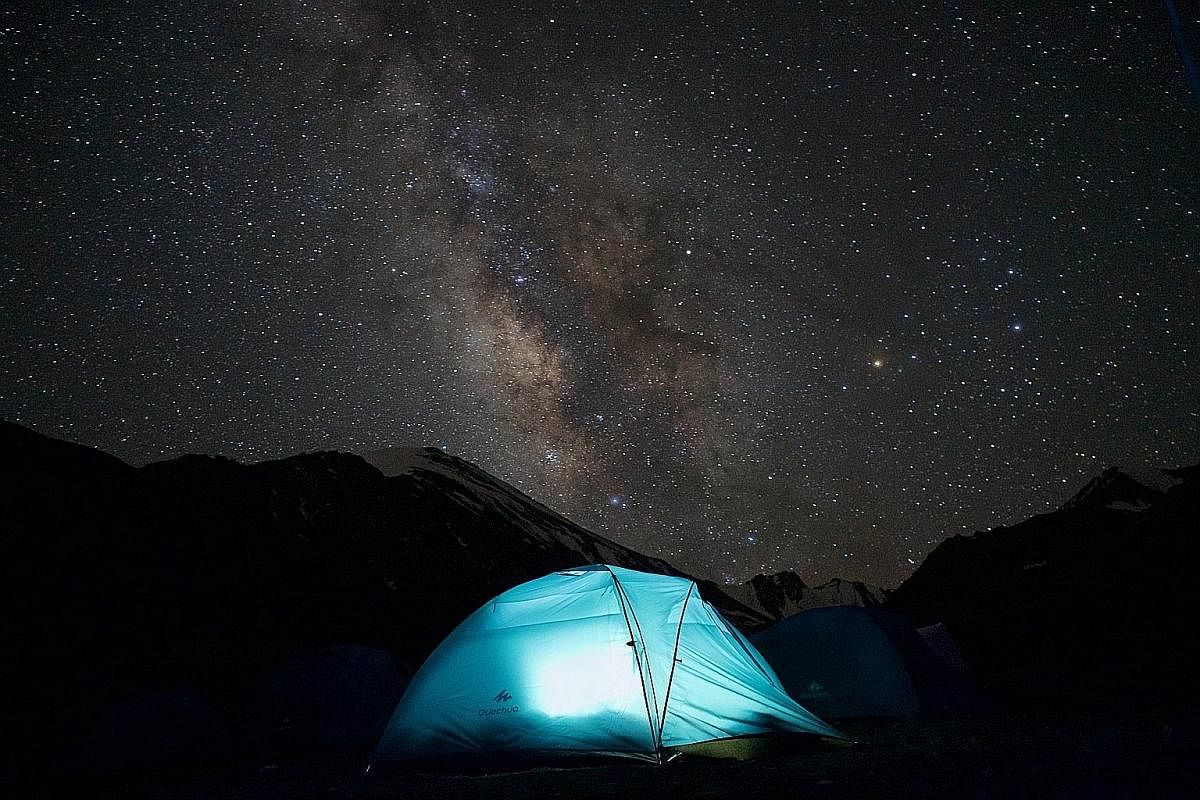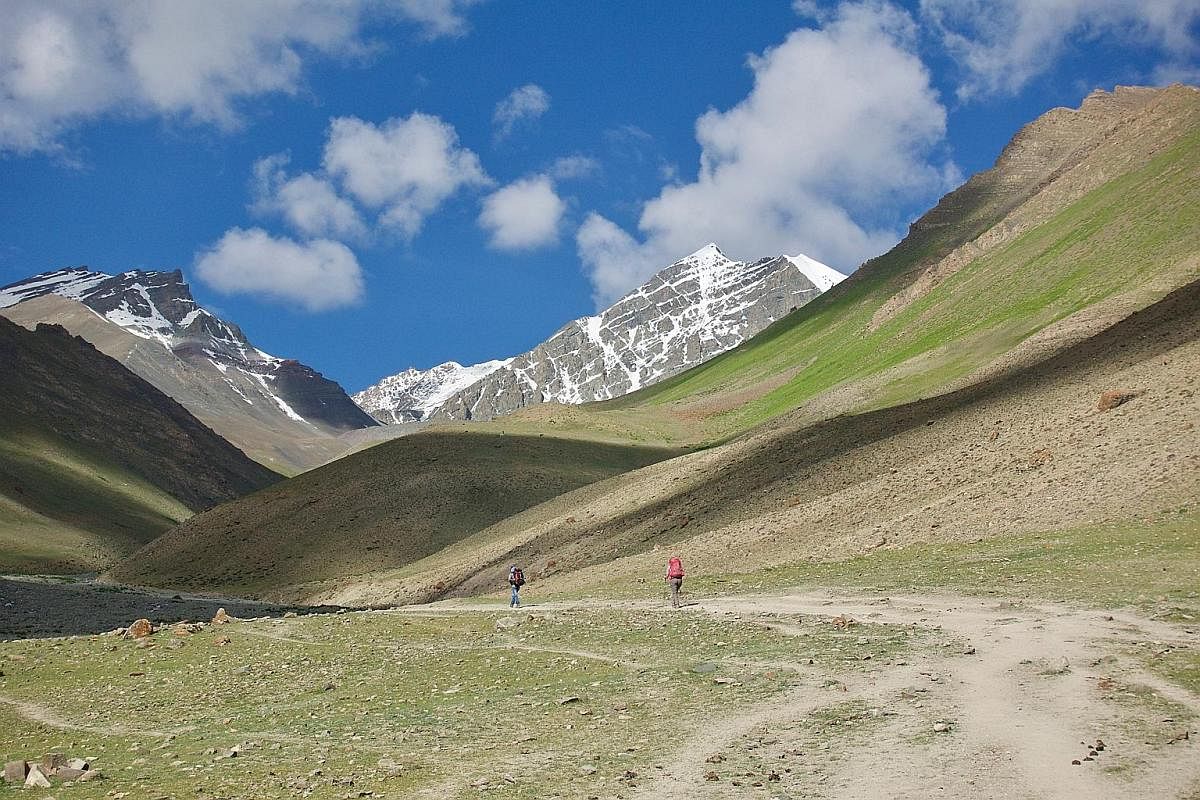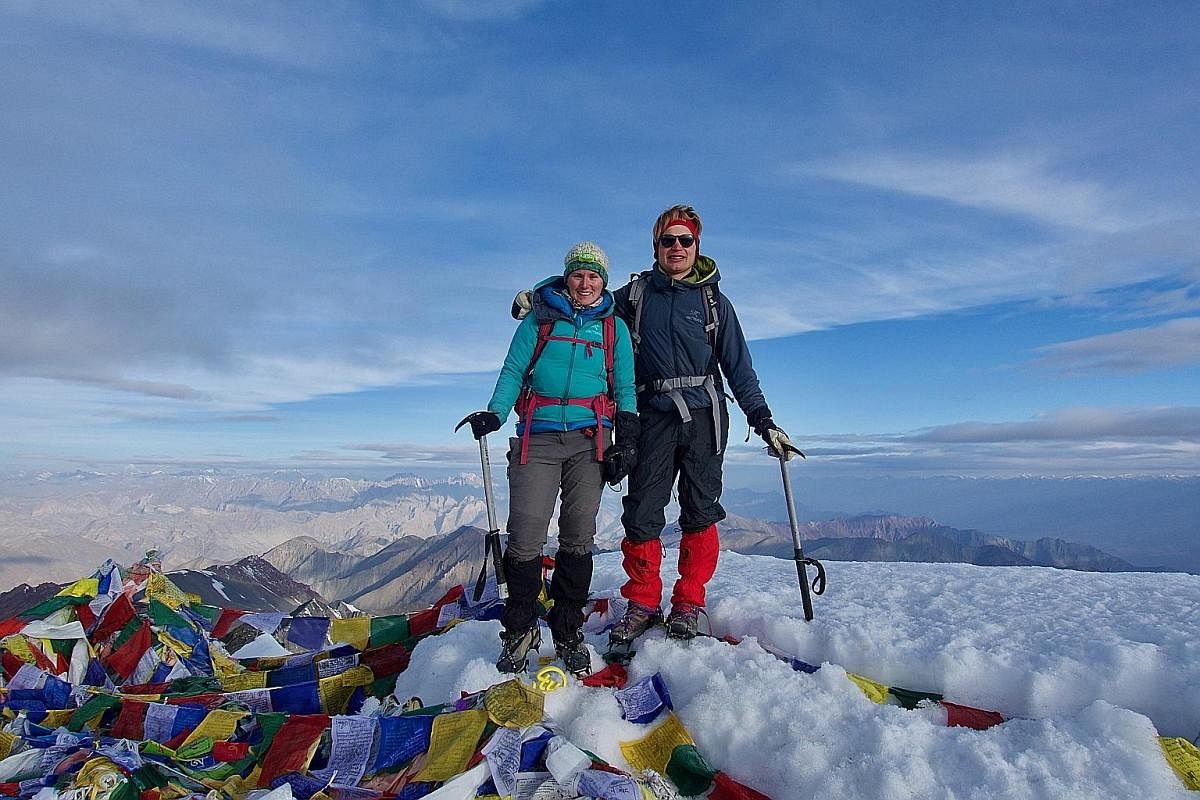-
GETTING THERE
-
Singapore Airlines flies daily to Delhi Airport. From Delhi, fly (one hour) or drive (three days) to Leh. Arrange local transport to the northern city of Leh, where the expedition to Stok Kangri mountain begins.
-
TRAVEL TIPS
• Arrange guiding services upon arrival in Leh. Many websites offer pre-paid packages, but these tend to be significantly more expensive than local prices.
• If you fly in, spend at least two days acclimatising in Leh before heading out on any expeditions. Use the time to recover from any jet lag and plan your trip.
• Leave your gear at home as everything can be hired cheaply ($10 to $15 a day) in Leh. In peak season (July to September), crampons, ice axes and ropes can be rented at the base camp. Likewise, permits can be bought at the base camp, though they cost a few hundred rupees more than in Leh.
• Plan contingency days to allow for acclimatisation as needed. At 5,000m, the oxygen concentration is approximately half that at sea level and this has noticeable effects on performance and sleep. Do not ignore symptoms of altitude sickness.
Savage beauty and silence of the Indian Himalayas
Serrated cliffs, starry nights and oxygen deprivation mark the three-day climb up Stok Kangri



"You need some water?"
Leaning nonchalantly against a boulder, our guide Tsering Chodan looks picture perfect, one arm extended, offering a bottle of water that hangs loosely between his fingers. He nods expectantly.
"Please. You take."
His voice is soft and his English is accented by his native Ladakhi, full of warmth. Though I have a bottle in my bag, I take an eager swig from his, too tired to reach for my own.
We have just crossed the 4,800m mark of the Indian mountain named Stok Kangri and are waiting for Anna, my climbing partner, to catch up.
She is not far behind, but khaki clothes mean she blends too well into the landscape. Only her pink, dusty bag distinguishes her from the backdrop of serrated cliffs, which taper to needles above.
"There is little oxygen here."
Chodan savours his statement for a moment and when I laugh breathlessly, he smiles. Two days in and he has been the fastest by far, doubling the pace set by Anna and I, until he was but a lone figure in the distance.
I take another swig and hear Anna approaching. We perform the customary exchange, moving around to each other's side pockets and pulling out snacks (almonds for the way up, cashews for the way down), before leaning our rucksacks against a rock to take the weight off our shoulders and hips.
As we rest, we take in our surroundings. The mountain we hope to summit, Stok Kangri, looms to the right, its eastern face a cruel patchwork of vertical rock and snow.
To the left, the Stok River, every bit as icy as the glacier it springs from, and base camp, where we plan to spend a few hours resting before attempting the summit that night.
It is a landscape of severe beauty and inhospitable wilderness, a combination that is as deeply alluring as it is dangerous, and one that commands one's immediate attention.
Far too soon, our moment's rest is curtailed by Chodan's enthusiastic announcement.
"Just over the ridge. Twenty, maybe 30 minutes. There is base camp. Challo!" he says, using the Hindu word for "let's go".
STARS AND SILENCE
It is day two of our three-day ascent of Stok Kangri.
We had started out of the northern Indian city of Leh, a former desert trading post organised haphazardly along the Indus, a broad, glacial river which allows trees of startling green to grow on the otherwise barren plateau.
Leh seems in a state of permanent disrepair, or perhaps repair, and it is often hard to tell what is being built and what is being demolished. Hardly anything in the city looks completely complete, only the mountains of the Stok Range are resolute in their solidity.
The city's skyline is dominated by these vast peaks, which extend up to the snow line and beyond. They do not look that high, but the mind is tricked by scale, for many of them rise well above 6,000m.
Stok Kangri is the highest, at 6,153m, and it draws both the eye and the mind, its immediacy suggesting attainability.
It is not uncommon for visitors to Leh to experience a sudden urge to climb Stok Kangri, having had no prior intention of climbing the peak.
This is the case with our own last-minute inclusion of the mountain on our itinerary and, after Anna's three-week research expedition on the geology of the Indian Himalayas, it seemed the perfect send-off before heading home.
And so, we arrive at base camp, breathless and determined.
Having spent time high in the mountains collecting data for Anna's PhD, we are both well prepared to tackle the mountain and are both acclimatised and fit.
We have planned three days for our summit attempt, with one extra "weather day" as contingency, in case of inclement weather. Most groups plan for four to seven days, depending on levels of acclimatisation.
Our night at base camp is spent beneath a freezing sky, cooled by a wind from the mountains that mercilessly picks off the insulating layer of clouds. In our tents, we fight the cold in our sleeping bags, dressed in the clothes we will climb in.
With few clouds, the sky is redeemed by stars. The Ursa Major constellation shines brightly over Stok Kangri and the southern sky is illuminated by the Milky Way, two hundred billion stars appearing as a crevasse upon the surface of the universe.
Otherwise, the camp is dark and silent, everyone seeking respite from the mountain's icy breath.
Our stomachs are full of dhal and rice - the food of the Himalayas - as nutritious as it is filling.
We should be resting for the climb, but sleep proves impossible. Instead, we talk in whispers and play Rummy by torchlight, waiting for midnight to come and our adventure to begin.
Midnight comes and Chodan's voice reverberates through the dark with hushed alacrity. "Anna. Oscar. We leave now."
Our party of three is joined by another, Anchuk, who takes over from Chodan as our guide to the summit.
Anchuk is a stoic man and says little, but his experience on the mountain is unquestionable: He had stopped counting several years before, after summit number 127.
He will lead us to the top of the mountain, helping us to navigate across the glacier, up the snowfield and onto the ridge leading to the summit.
CRAVING OXYGEN
To climb Stok Kangri is to enter a world of oxygen deprivation. Throughout the climb, the sound of my own ragged breath accompanies me closer than a shadow and much more intimate.
Across the glacier at the base and onto its moraine, that tortured sound continues, occupying body and mind. Moving up onto the steep incline to the mountain's ridge, I impose a 50-step maximum, which soon becomes 40, then 30, then 20, as we climb higher, ever higher.
At some point, Chodan decides to turn back with a headache. Finally, his smoking habit seems to have taken its toll.
Anna is fading and lies down on the snow, seemingly defeated.
Anchuk is constant, giving out quiet morsels of encouragement, but there is a look of obvious concern on his face. I return down the mountain to where Anna is resting.
"We can always summit tomorrow, we have time," I offer.
We are more than two-thirds of the way up now, and this knowledge is reflected in the look on Anna's face.
To unpick our effort just to repeat it again tomorrow would be heartbreaking. "No, I'm okay, let's get to the top," comes the reply.
Mountains have the power to give and take. They give experience and they take life, and it is easy to lose yourself to their power.
As we emerge onto the ridge, we are given energy and warmth by the rising sun, which illuminates our path to the top.
Justification, for every step and every breath, comes from the view that stretches 50km in all directions. The ridge gives us hope and an end in sight - 500m of snow and rock to the summit. And the rope gives us safety, binding our lives together as we walk the steepest section of the mountain. So close now.
Five hours and 17 minutes after leaving base camp, we reach the summit, an uneven patch of snow 6,153m above sea level.
Prayer flags float in a gentle breeze and the light reveals what we have climbed, a vast snowfield that stretches 1,000m to the glacier below.
We revel in the glory of the occasion, drinking in the air and enjoying a moment of rest. The mountain has taken everything out of us and we are basking in all it has to offer.
It is a shame Chodan is not with us to celebrate, but better safe than sorry. We take a few photos and, before the resting cold sets in too deeply, we turn to start our descent.
Every step down feels more breathable, warmer and easier than the last, but still, the descent seems to take an age. Adrenaline gone, our bodies ache with exertion.
But 500m out from camp, there he is, Chodan, waiting to take us on the final stretch.
We greet with a hug and he congratulates Anna, Anchuk and I on summiting and then takes our bags and hoists them onto his shoulders. He turns, water bottle in one hand, grinning.
"You need some water?"
• Oscar Boyd, a travel writer from the United Kingdom, is on the lifestyle and culture desk of The Japan Times.
Join ST's Telegram channel and get the latest breaking news delivered to you.
A version of this article appeared in the print edition of The Sunday Times on January 21, 2018, with the headline Savage beauty and silence of the Indian Himalayas. Subscribe

